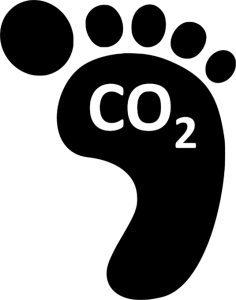



The carbon footprint is one of the main factors that leads to global climate change. The extraction and processing of hydrocarbons has become one of the leading sectors of the economy during the 20th century. All this was also accompanied by further consumption of energy carriers: coal, oil, gas, etc. This led to the fact that the combustion of hydrocarbon fuel was accompanied by emissions of a large amount of carbon dioxide (CO2) into the atmosphere. Carbon dioxide is a greenhouse gas. Due to the increase in the concentration of CO2, the properties of the atmosphere began to change rapidly, resulting in the retention of solar heat in the atmosphere and an increase in the average temperature.
1) Climatic cataclysms, such as natural disasters, droughts, hurricanes, rising sea levels, etc.;
2) In 2015, more than 100 countries signed the Paris Agreement, according to which they committed themselves to reduce their greenhouse gas emissions. Greenhouse gases other than CO2 include others, for example, methane, nitrous oxide, etc., but the equivalent for calculation is CO2. In order to implement the terms of the Paris Agreement, the countries began to develop a low-carbon economy, reducing the greenhouse footprint and minimizing the use of fossil fuels.
In many countries, taxes and customs duties on raw materials and products with a high carbon footprint are introduced to stimulate a low-carbon economy. Accordingly, companies should be ready for new requirements. From now on, the carbon footprint is an important characteristic of the product. In order to remain competitive, companies are forced to take it into account and reduce it. Moreover, today a large number of global institutional investors, such as banks, pension funds or sovereign wealth funds, are withdrawing from high-carbon assets, starting to invest more in renewable energy, waste recycling, and renewable energy infrastructure. This process is called deinvestment.
The carbon footprint is the emissions of greenhouse gases that are produced by humans when burning fuel, in production processes, agricultural activities or putrefaction. Imagine a plant that produces pipes: ore is extracted and processed at high temperature, it requires a large amount of energy. At the stage of pipe production, a large amount of electricity, transport and other equipment that uses various fuels is needed. One way or another, the carbon footprint is present at every step of the product life cycle from the extraction of raw materials to the processing of waste.
Manufacturing companies and businesses are under pressure from stakeholders.

The goal of a low-carbon economy is to reduce the carbon footprint. Businesses need to reduce their carbon footprint due to market conditions. What can be done to minimize the carbon footprint?
It is especially important to determine the carbon footprint of enterprises that conduct foreign economic activity with European, North American and Asian markets. In these markets, there are tax duties on the supply of goods. Due to the fact that there are carbon taxes in these countries, goods supplied from Russia are taxed. In order to calculate the tax, you need to calculate your carbon footprint. The carbon footprint is also necessary in the preparation of CDP (Carbon Emission Reports) reporting.
The ISO 14061-14064 standard is most often used in the world. The methods for determining the carbon footprint are prescribed in GHG protocols, which apply to various industries: cement production, electricity, aluminum, steel, wood, semiconductors, agriculture, etc. (Source: GHGprotocol.org).
In Russia, methodological guidelines and guidelines for quantifying greenhouse gas emissions are presented in Orders No. 300 and 330 from the Ministry of Natural Resources and Ecology of the Russian Federation.
To calculate the carbon footprint, a company must keep records of its resources (energy consumption, transport used, as well as various raw materials). Different methods described earlier are used for different processes.
1) The company independently calculates its carbon footprint at the enterprise;
2) The Company engages an independent organization to audit the carbon footprint calculations. This is a verified type of declaration.
Development of the Concept of Optimization and Compensation of the Carbon Footprint